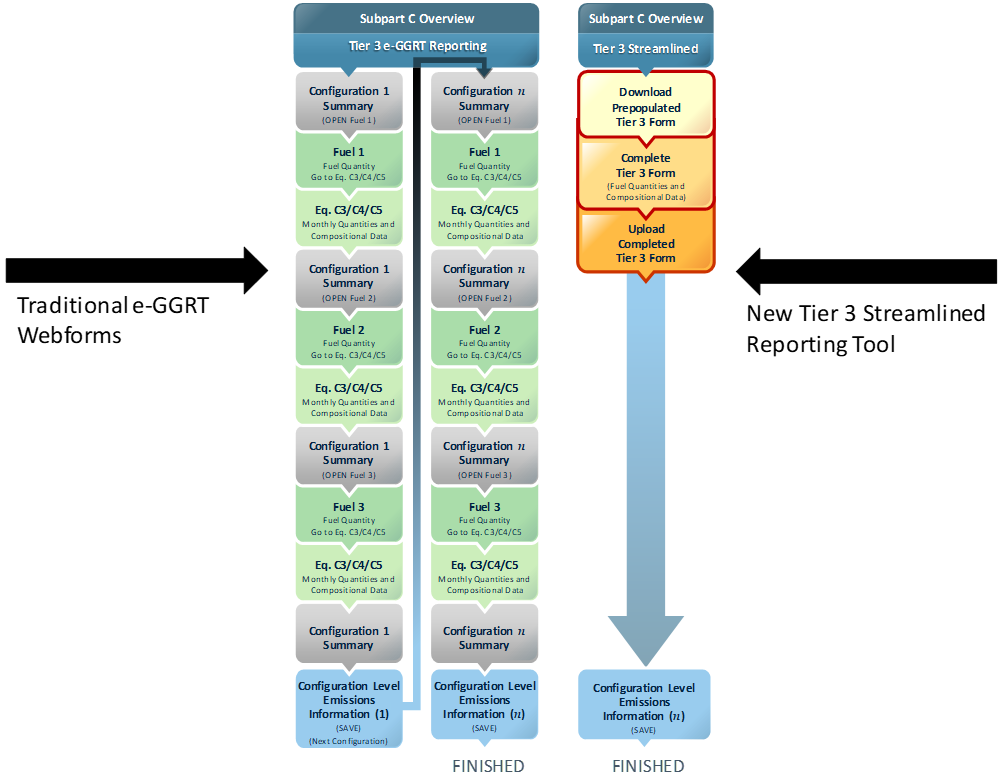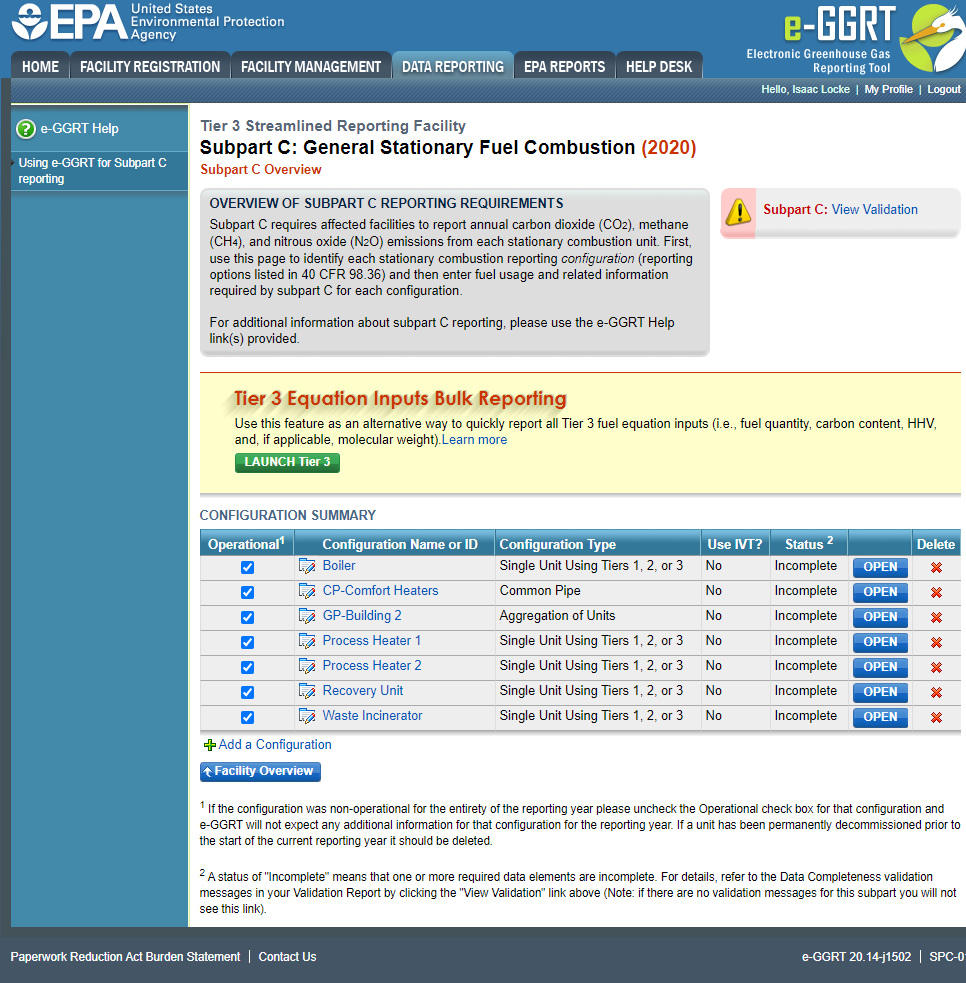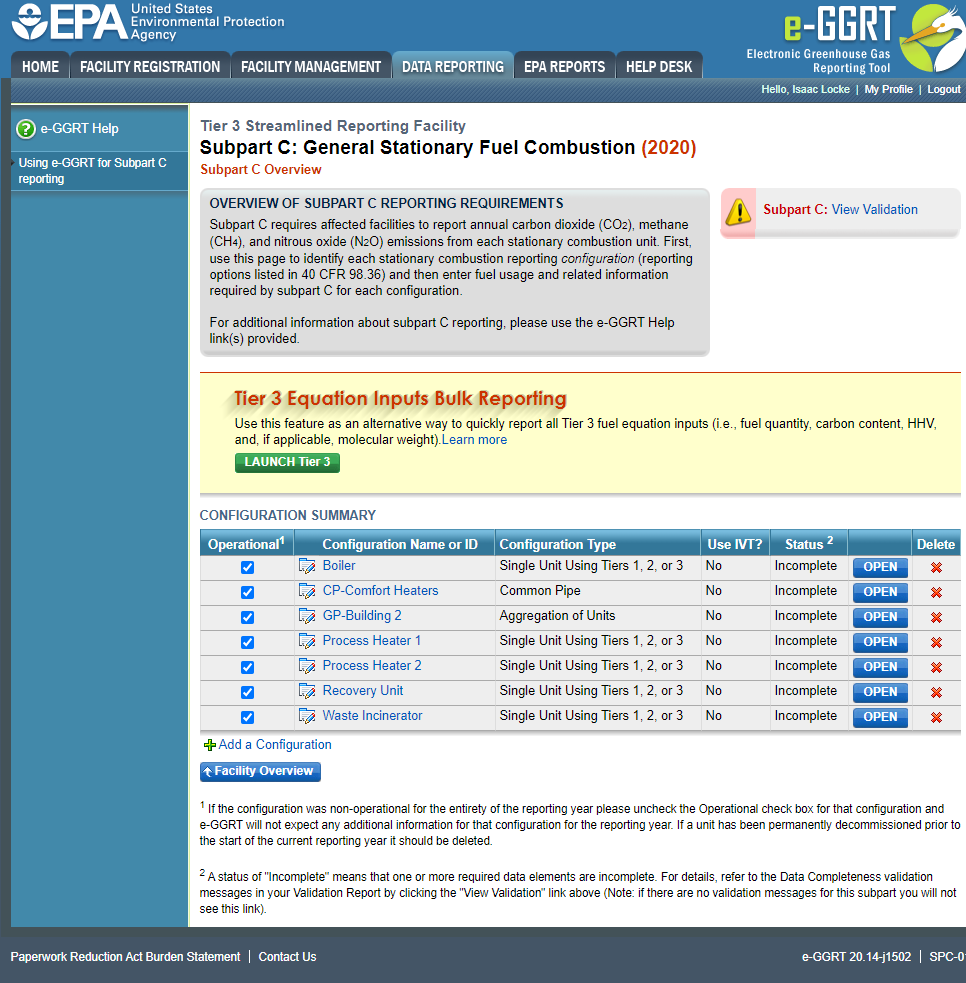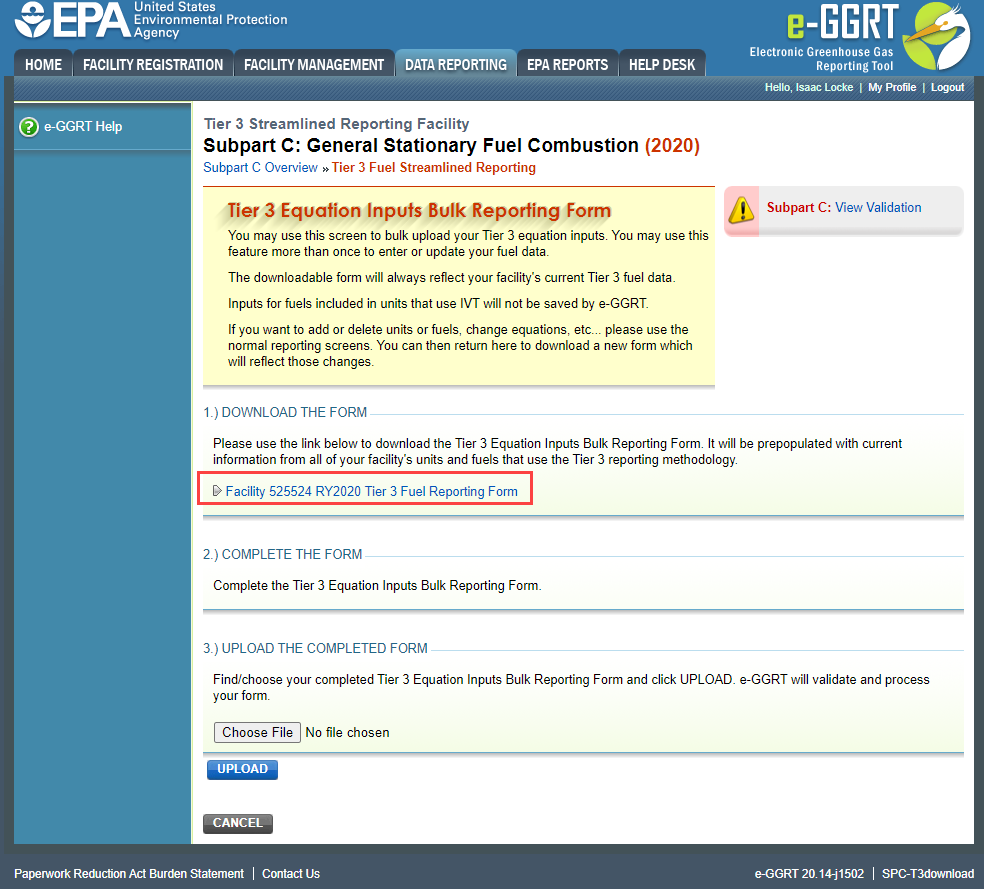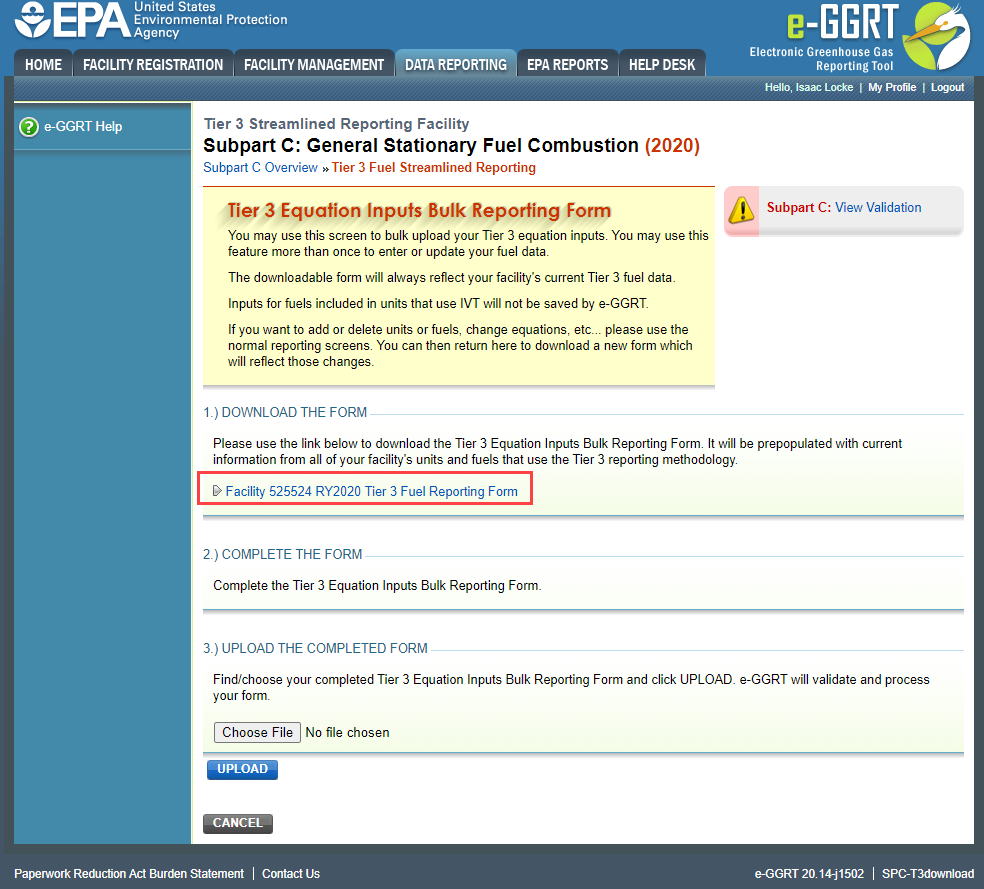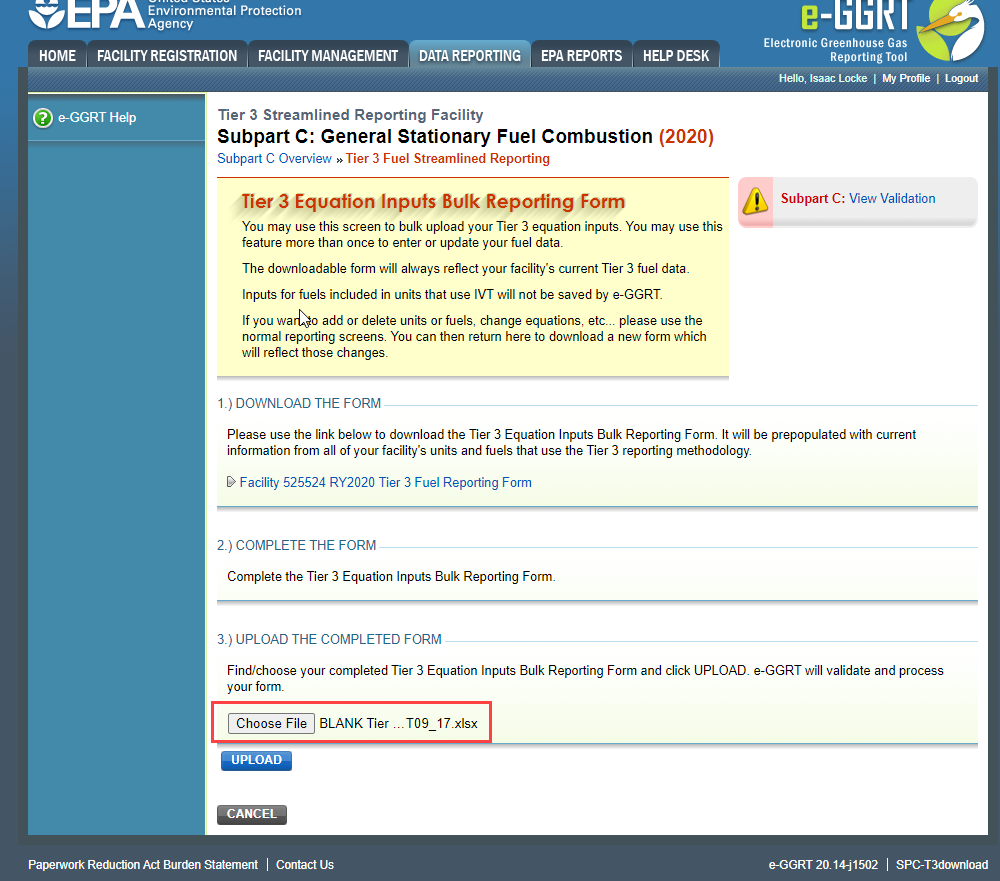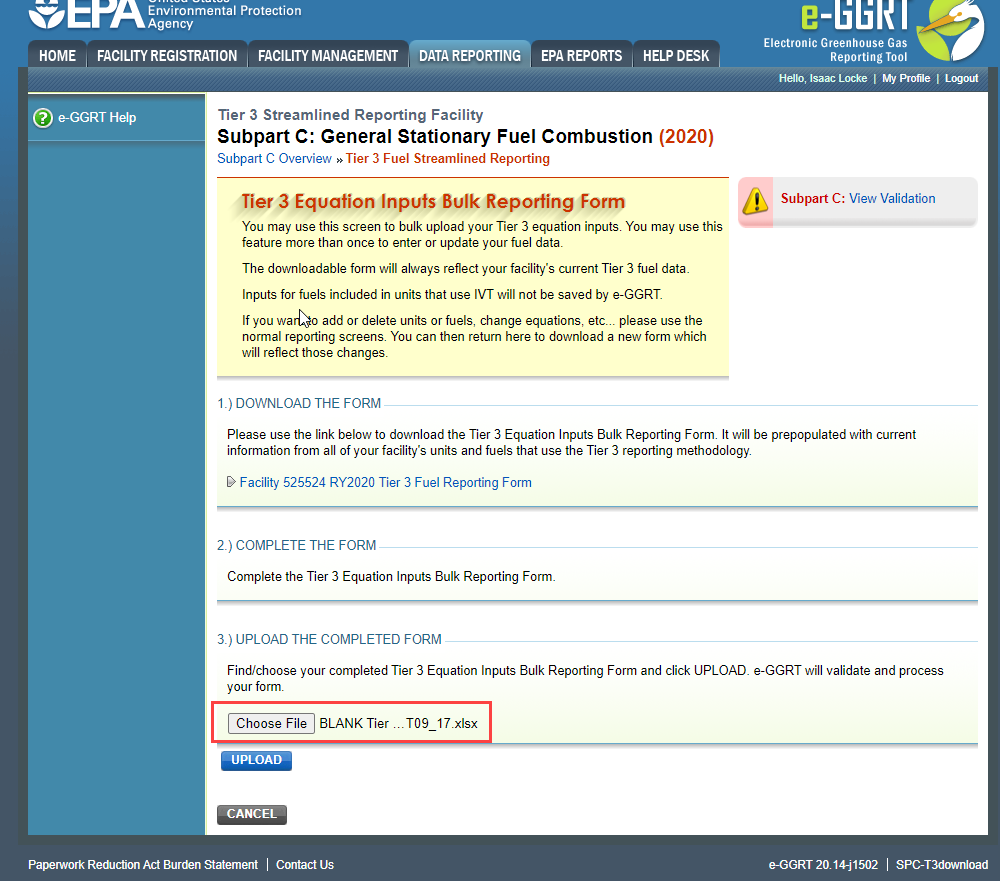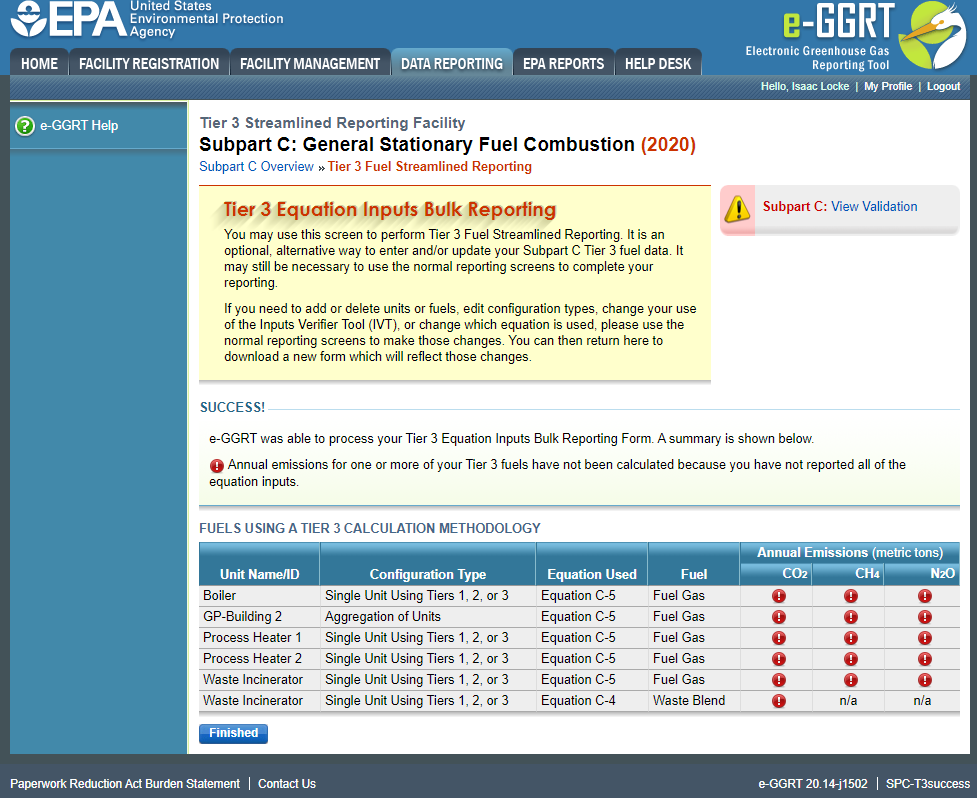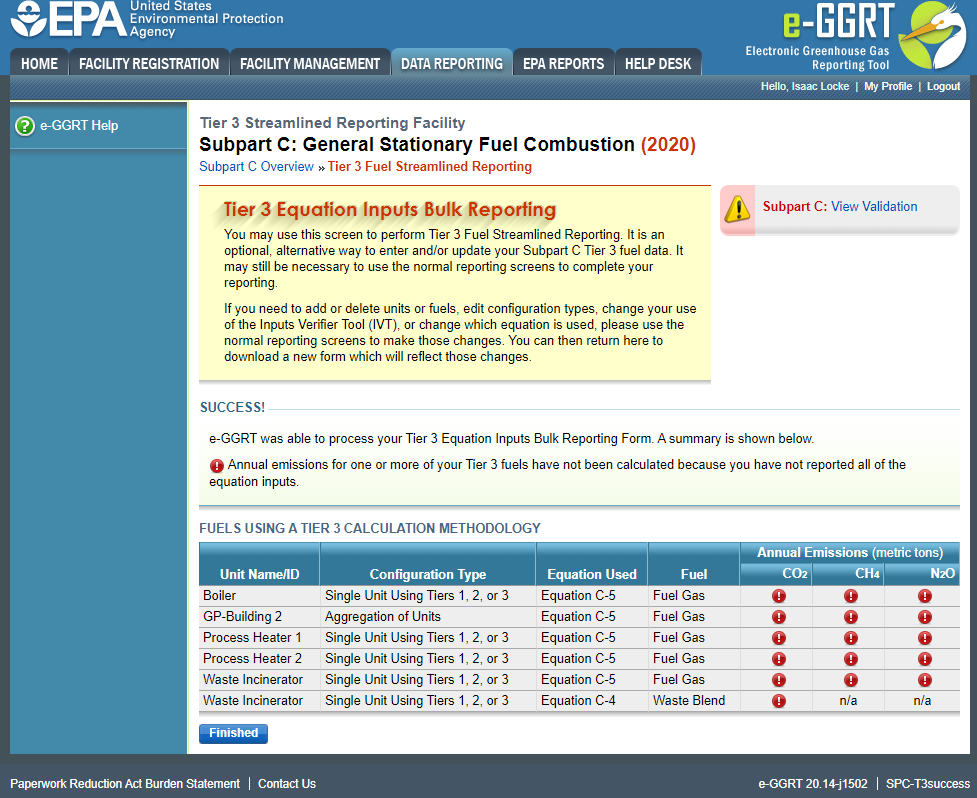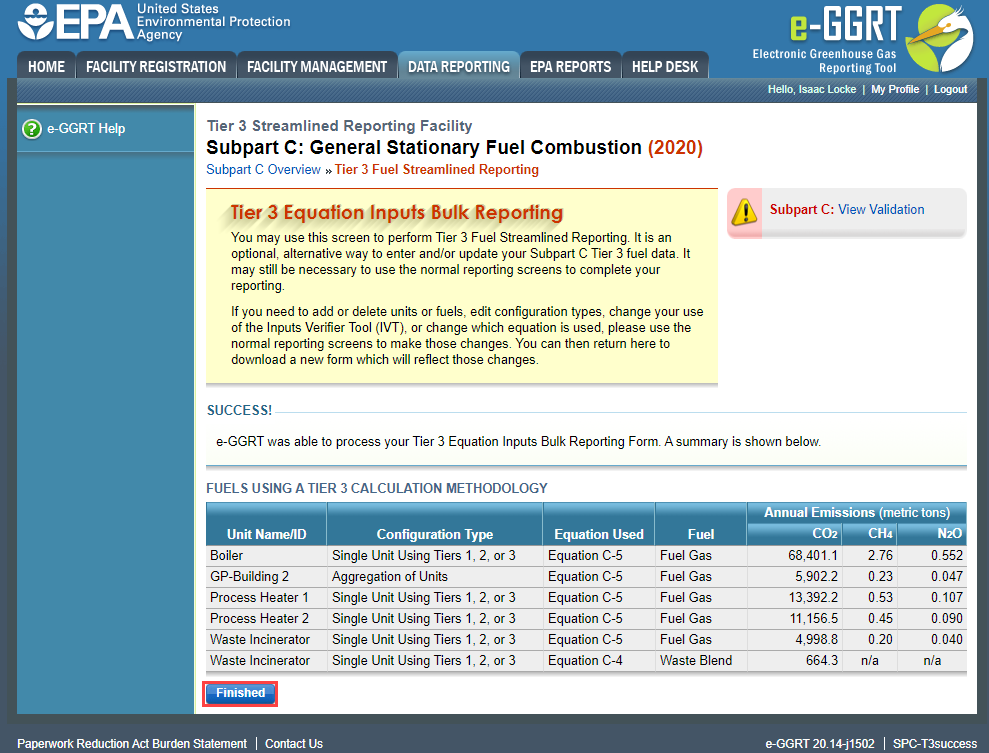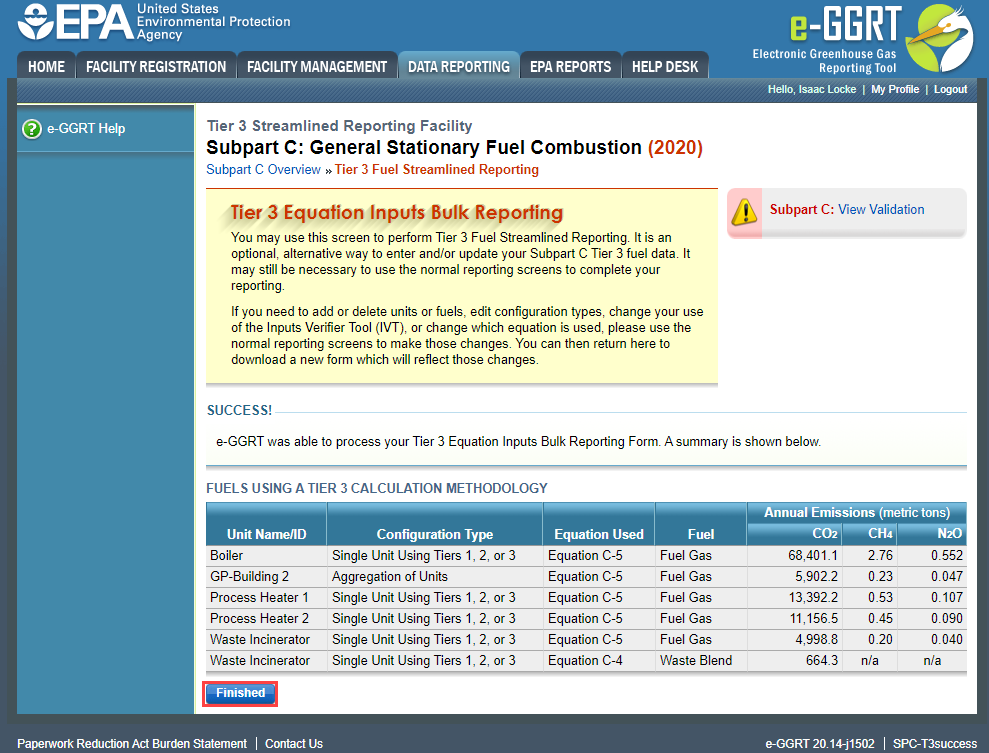Tier 3
For Subpart C facilities that use the Tier 3 calculation methodology, using the new Streamlined Reporting Option (i.e., Tier 3 Equation Inputs Bulk Reporting) will allow for simultaneous entry of all fuel-level information and emissions equation inputs (i.e., fuel quantities, carbon content, molecular weight, HHV) across all configurations in a single Excel Worksheet. If a facility has configurations and fuels that are eligible for Tier 3 Streamlined Reporting, the pop-up box shown below will appear on the Subpart C Overview Page. This feature is only applicable in Reporting Year 2019 (RY19) and forward, and is available for both fuels and configurations which are carried forward from the prior RY, and new configurations and fuels added in the current RY.
To maximize the time and effort savings available from Tier 3 Equation Inputs Bulk Reporting, users should first ensure all of their configurations and fuels are present in e-GGRT (either by adding them to the current RY, or as carried forward from the prior RY), and then download the Excel Worksheet. Adding the configurations and fuels in e-GGRT, without entering equation input values for Equations C-3, C-4, and C-5, will allow e-GGRT to provide those rows in the streamlined reporting worksheet, thus allowing users to use the centralized data entry available in the worksheet and eliminate the need to navigate across several traditional e-GGRT webforms.
Click this link to expand
After clicking, "LAUNCH Tier 3", users are taken to the Tier 3 Equation Inputs Bulk Reporting Page. From here, users can download a Microsoft Excel spreadsheet which will be pre-populated with all of the eligible information for each configuration.
Click this link to expand
After downloading and opening the form, users can enter all fuel-level information and equation inputs into this spreadsheet. The grey highlighted information that is pre-populated in the Microsoft Excel sheet cannot be altered in any way. If a user wishes to make alterations to the configuration or fuel information in the bulk reporting form, they should make the changes in the traditional e-GGRT webforms, and then download a new version of the Microsoft Excel form. The new form will have the updates represented in the grey cells.
Caution: Certain Copy and Paste functions can corrupt this form. To avoid this, only use the ‘Paste Values (V)’ option when pasting into this form.
Click this link to expand
Any cell that needs to be completed will be represented by a blue background, and additional limitations are placed in the Microsoft Excel sheet in order to prevent erroneous data entry. Any data element which is closed (has a black fill) needs no data entry. If a user believes that they should enter data into a cell which they do not have access, they are encouraged to check the traditional e-GGRT webforms for the configuration/fuel in the row they believe to be incorrect.
Click this link to expand
After a user has completed a Microsoft Excel form, they upload it using the "Choose File" link on the Tier 3 Equation Inputs Bulk Reporting Page and then clicking the “UPLOAD” button.
Click this link to expand
If the uploaded form is missing some required data or the data provided cannot be processed by e-GGRT, the user will receive warning messages as show below. These must be addressed before the form can be completely processed by e-GGRT. Any blanks in the data input reporting form will be processed as a blank data entry and will need to be addressed prior to submitting the report.
Click this link to expand
After addressing any data errors and successfully uploading a Microsoft Excel sheet, a summary page appears which displays all fuels using the Tier 3 Equation Inputs Bulk Reporting Form. Users should review the annual emissions calculations, and, when satisfied the values are correct, click "Finished" at the bottom of the page.
Click this link to expand
Any remaining information that is required to be reported for eligible configurations, or any configuration that does not use the Tier 3 Equation Inputs Bulk Reporting Form, will still need to be completed using the traditional e-GGRT webforms before the Subpart C reporting is complete.


